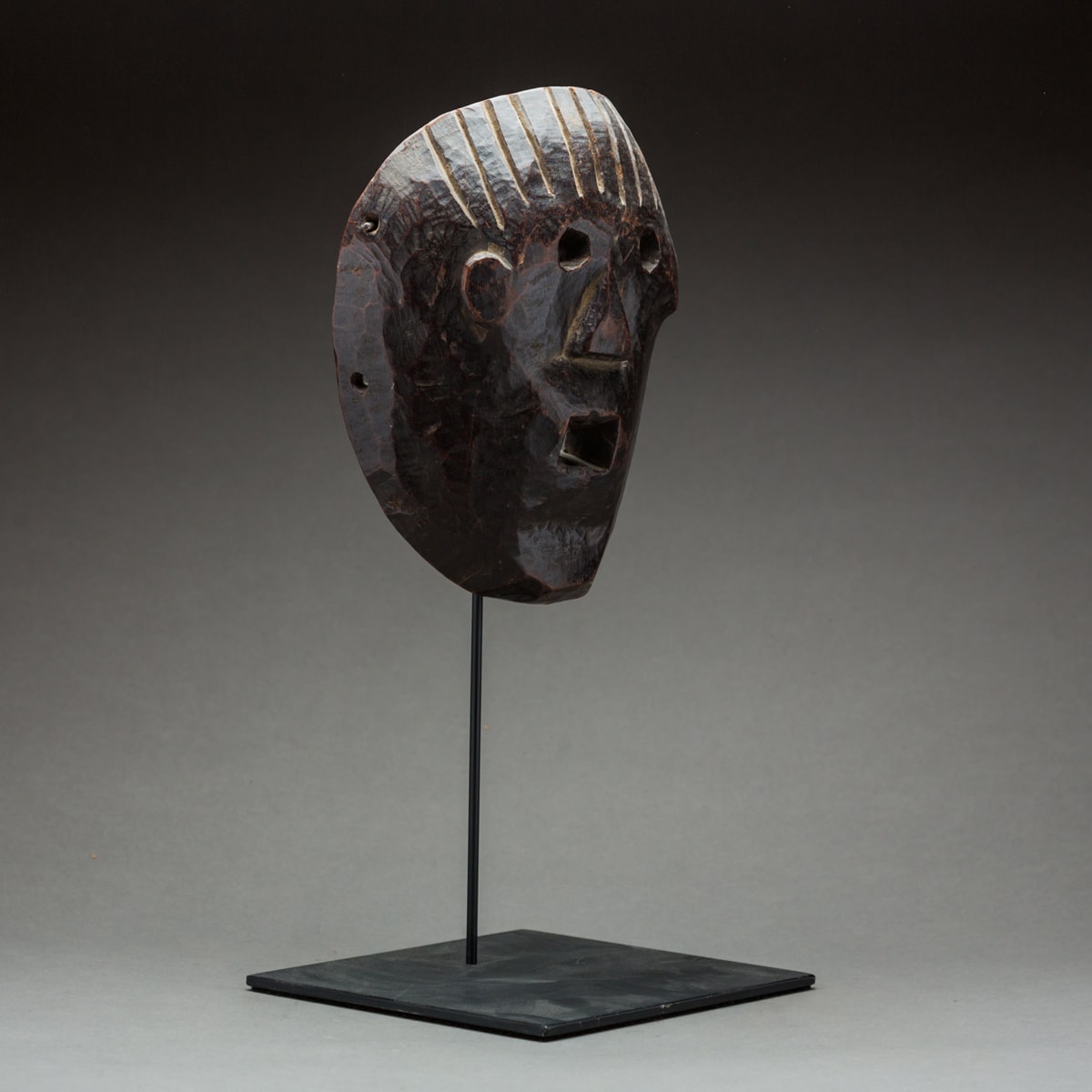He-He Wooden Mask, 20th Century CE
Wood
22.9 x 17.8 cm
9 x 7 in
9 x 7 in
PF.3382
Further images
This emphatically stylised mask was made by one of the 126 Bantu-speaking peoples of Tanzania, possibly the Hehe (also known as the Wahehe). It dates to the first half of...
This emphatically stylised mask was made by one of the 126 Bantu-speaking peoples of Tanzania, possibly the Hehe (also known as the Wahehe). It dates to the first half of the twentieth century. The mask is typical of the region, with a roughly oval silhouette, a comparatively small face, pierced round eyes, a triangular nose and a rectangular mouth. Detailing is strictly limited – small low-relief ears and a series of deep, vertical grooves that indicate hair – and this accentuates the geometrical qualities of the mask. Three small holes within the mouth suggest that it would once have been inset with teeth. The surface has a dark glossy patina.
Differentiating tribal artistic traditions within Tanzania is something of a challenge as the tenets of each group are not fully understood. They served variable functions, associated with harvests, lineage/ancestor worship and fertility in rituals that were described by early explorers but which are now rare or extinct. The (Wa)Hehe were especially militaristic, and it is possible that this mask was involved in some way with this aspect of their lives, especially given its rather fearsome appearance. The patination on this piece is extremely deep, implying a long use history and thus considerable social importance.
This is a rare and impressive piece of African art.
Differentiating tribal artistic traditions within Tanzania is something of a challenge as the tenets of each group are not fully understood. They served variable functions, associated with harvests, lineage/ancestor worship and fertility in rituals that were described by early explorers but which are now rare or extinct. The (Wa)Hehe were especially militaristic, and it is possible that this mask was involved in some way with this aspect of their lives, especially given its rather fearsome appearance. The patination on this piece is extremely deep, implying a long use history and thus considerable social importance.
This is a rare and impressive piece of African art.







